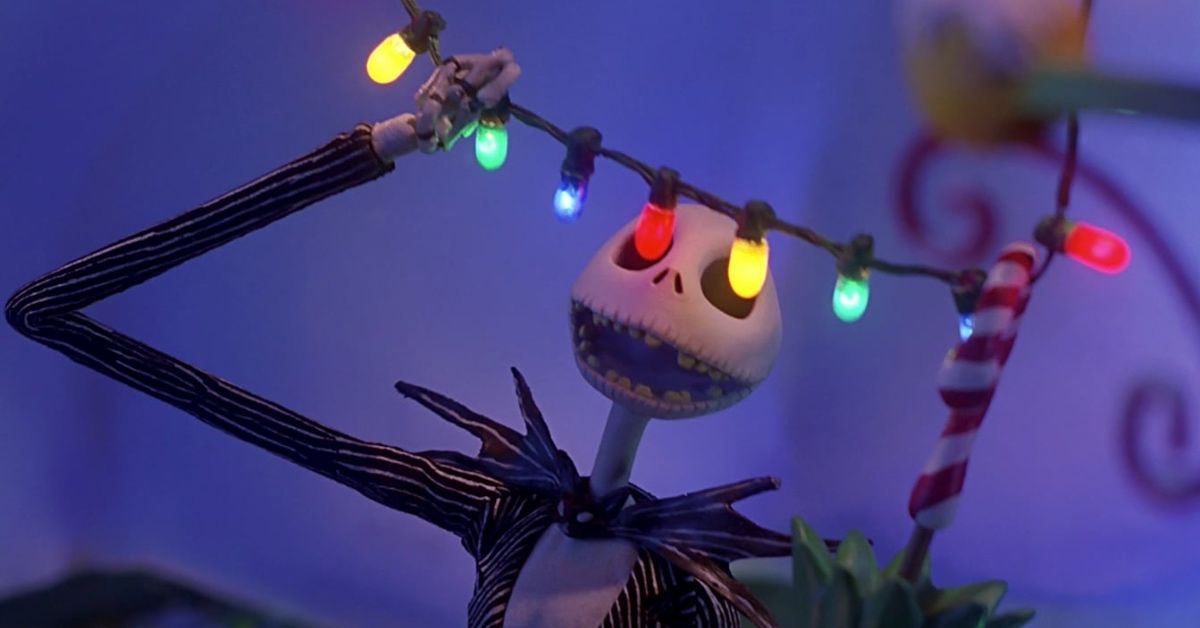When looking through the history of animated movies, there are a few movies that stand out as ones that legitimately changed the game. Snow White was the first full-length animated movie and changed the world of film, while Toy Story was the first entirely computer-animated movie to hit theaters.
In the case of The Nightmare Before Christmas, this film has been a moneymaking machine since its release, and it has inspired countless other projects. The team hit a home run here, but there were some hiccups during production, including an ending that Tim Burton absolutely despised.
Let's take a look at that ending and how this movie came to life.
'The Nightmare Before Christmas' Is A Classic
Back in 1993, The Nightmare Before Christmas hit theaters and became a phenomenon that has blossomed into a huge moneymaker for Disney. The film was released under the Touchstone banner due to its dark nature, but thanks to its legacy and ability to generate revenue, Disney has been more than happy to claim this film as their own while laughing all the way to the bank.
Tim Burton wrote the poem that inspired this film, but he did not direct it, nor did he write the screenplay. Nevertheless, it can be argued that this is Burton's most famous work, as his name is embedded in the title. Little did he know at the time that his poem would go on to affect so many people.
At this stage, few animated movies come close to matching what Nightmare has been able to accomplish, and this is a great thing for all who were involved, as making the film turned out to be a difficult undertaking.
Making The Movie Was Hard Work
Instead of using traditional animation, the stop-motion style used for The Nightmare Before Christmas certainly made things difficult for all involved. The production itself wound up lasting for several years, and getting to the final draft of the film was a tough road for everyone on the team.
According to director Henry Selick, "I was on the film for three-and-a-half years. The stop-motion animation took about 18 months, but with pre-production, where you storyboarded every single shot, it did add up."
Interestingly, before a script was even done, Danny Elfman had the soundtrack ready to roll.
"Tim would show me sketches and drawings, and he would tell me the story, describe it in bits of phrases and words and I would say, 'Yeah, I got it.' Three days later, I had a song," said Elfman.
As is the case with any movie, there were things that didn't make the final cut and that were changed, including a scene that Selick wishes would have made it into the movie.
"We show a lot of Halloween Towners enjoying winter sports and snow, and you see the vampires playing hockey and they hit the puck right at the camera — and originally it was Tim Burton's head," Selick revealed.
This wasn't the only thing that didn't make it into the final draft of the film. At one point, Tim Burton heard a version of an ending that he absolutely despised.
Tim Burton Hated The Original Ending
According to Dread Central, Henry Selick stated he wanted an ending that revealed that Oogie Boogie was being controlled by Dr. Finkelstein, and this upset Tim Burton greatly.
Selick said, "I came up with this idea that Oogie Boogie was actually the evil scientist inside of him. [Tim Burton] hated it, he hated it so much. He kicked a hole in the wall and I went ‘Tim is your foot okay,’ he said ‘Yeah, they’re steel toes.'"
In an interesting turn, Caroline Thompson, who wrote the screenplay, had an issue with the ending that Burton had, and when she voiced her concerns over it, Burton flipped out.
"He just basically turned around and started screaming and attacking an editing machine. They make Tim look like a ten-pound weakling, these things are huge, metal machines you can't move off of the floor," said Thompson.
Eventually, production would wrap, and the ending that made its way into the film wound up being a perfect fit. The change in dynamic by having Jack climb the hill to see Sally was one that Thompson was happy to see.
"At least it's a little feminist correct. Over the years, I thought Sally was kind of a tool," said Thompson.
Production for this film was exceptionally difficult, but it resulted in one of the most loved animated movies of all time coming to life.

